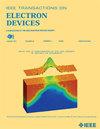High-Q Coupled Mode Resonator Based on Wafer-Level Transfer Technology
IF 2.9
2区 工程技术
Q2 ENGINEERING, ELECTRICAL & ELECTRONIC
引用次数: 0
Abstract
This article presents a high quality factor (Q value) coupled mode Lamb wave resonator (LWR) based on an AlSc0.095N thin film and introduces a novel fabrication process applied to LWRs with an IDT-IDT structure. To address the issue of multiple resonance modes that are excited in IDT-Floating LWRs within the 1.5–3-GHz frequency range due to the close phase velocities of acoustic modes, the proposed IDT-IDT LWR configuration enables the degenerate excitation of multiple acoustic modes. Further optimization of the number of IDT fingers and the width of the reflective boundary effectively suppresses in-band spurious mode. By incorporating an acoustic speeder structure, anchor loss is significantly suppressed, enhancing the Q value. To address the manufacturing challenges of IDT-IDT structured resonators, a fabrication process based on wafer-level transfer technology is proposed. The fabricated AlSc0.095N film with a thickness of 770 nm achieves a full-width at half-maximum (FWHM) value of 1.18°. The LWR fabricated with this process, operating at 2.27 GHz, achieves a Bode-Q value of 1307, and the electromechanical coupling coefficient (求助全文
约1分钟内获得全文
求助全文
来源期刊

IEEE Transactions on Electron Devices
工程技术-工程:电子与电气
CiteScore
5.80
自引率
16.10%
发文量
937
审稿时长
3.8 months
期刊介绍:
IEEE Transactions on Electron Devices publishes original and significant contributions relating to the theory, modeling, design, performance and reliability of electron and ion integrated circuit devices and interconnects, involving insulators, metals, organic materials, micro-plasmas, semiconductors, quantum-effect structures, vacuum devices, and emerging materials with applications in bioelectronics, biomedical electronics, computation, communications, displays, microelectromechanics, imaging, micro-actuators, nanoelectronics, optoelectronics, photovoltaics, power ICs and micro-sensors. Tutorial and review papers on these subjects are also published and occasional special issues appear to present a collection of papers which treat particular areas in more depth and breadth.
 求助内容:
求助内容: 应助结果提醒方式:
应助结果提醒方式:


